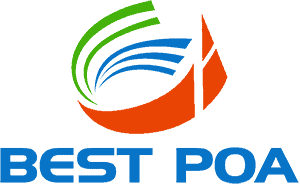More Information about our Tuition Classes
Are you demoralized with not being able to understand accounting concepts or balance that income statement? Don’t lose hope! Here at Best POA, our N(A) Level POA Tuition is catered specifically to help you at any level of your understanding of the subject. We believe that with perseverance and proper guidance, you will be able to achieve the results you are looking for.
Topics Covered
Topics covered for N(A) Level POA Tuition are based on the POA textbook
- Introduction to business (Types of business ownership)
- Stakeholders and their decision needs
- Roles of accounting and accountants
- Accounting theories
- Types of business transactions (Cash vs credit transactions)
- Accounting cycle
- Types of source document
- Accounting information system
- 5 Elements of financial statements (Assets, liabilities, equity, income and expense)
- Accounting equations (Basic and expanded equations)
- Understanding double-entry recording system
- Journal entries (Double-entries for recording of business transactions)
- Ledger accounts (Opening, recording and closing of ledger accounts)
- Discounts (Trade vs cash discounts)
- Interpreting ledger accounts
- Trial balance
- Financial statements (Statements of financial performance and position)
- Income (Definition and accounting theories)
- Accounting for revenue
- Accounting for other income
- Presentation of Income
- Interpreting revenue and other income
- Expenses (Definition and accounting theories)
- Accounting for expenses
- Presentation of expenses
- Interpreting other expenses
- Cash (Cash, cheques, dishonoured cheques, bank statement)
- Interpreting cash at bank
- Purposes of internal controls
- Bank reconciliation (Purposes and presentation)
- Inventories (Definition and accounting theories)
- Decision: Which inventory to buy
- Accounting of inventories (Cost of purchases, cost of sales, FIFO)
- Accounting for impairment loss on inventory
- Interpreting inventory
- Trade receivables (Definition and accounting theories)
- Decision: Credit worthiness of customers
- Accounting for trade receivables
- Accounting for impairment loss on trade receivables
- Interpreting allowance for impairment of trade receivables
- Non-current assets (Definition and accounting theories)
- Accounting for non-current assets (Capital vs revenue expenditures)
- Accounting for deprecation (Definition, methods, calculation and recording)
- Interpreting non-current assets
- Trade payables (Definition)
- Decision: Which supplier to buy from
- Accounting for trade payables
- Interpreting trade payables
- Borrowings (Definition and accounting theories)
- Accounting for loan
- Presentation of long-term borrowings
- Accounting for interest expense (Exclude calculation of interest)
- Presentation of interest expense
- Interpreting loan and interest expense
- Equities (Types of Equities, definition and accounting theories)
- Owner’s equity (Sole-proprietorship, capital vs drawings accounts)
- Accounting for owner’s equity
- Interpreting drawings and capital
- Errors not revealed by trial balance (Definition and types of errors)
- What are the sources of the transactions recorded in the control accounts?
- Effects of adjustments
- Preparation of statements of adjusted trial balance
Location
Blk 56 Geylang Bahru
5 mins walk from Geylang Bahru MRT Station (DT24)
Bookings on priority basis, please call 9050 9010 for class availability.
Average Exam Results of Our POA Students
GCE N(A) Level
Regular Class
64.7% Students scored Grade 1
25.5% Students scored Grade 2
6.1% Students scored Grade 3
Crash Class
35.6% Students scored Grade 1
22.2% Students scored Grade 2
26.5% Students scored Grade 3











